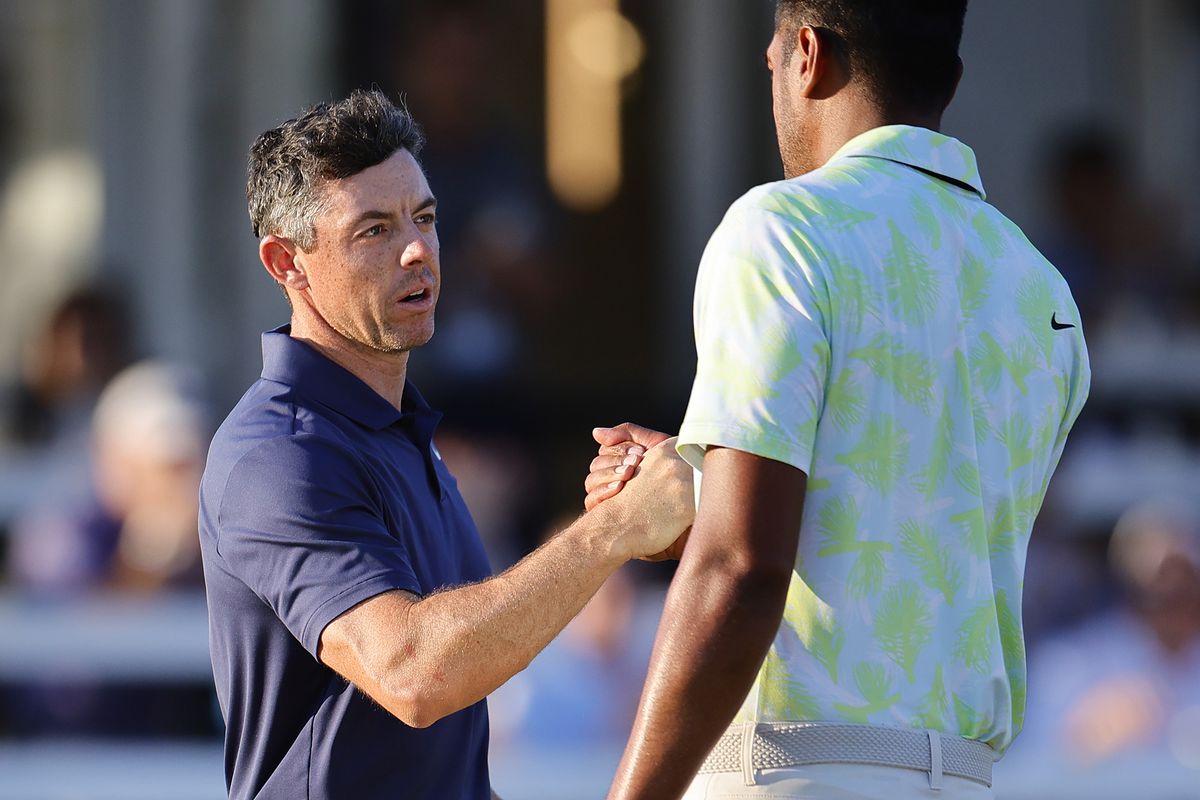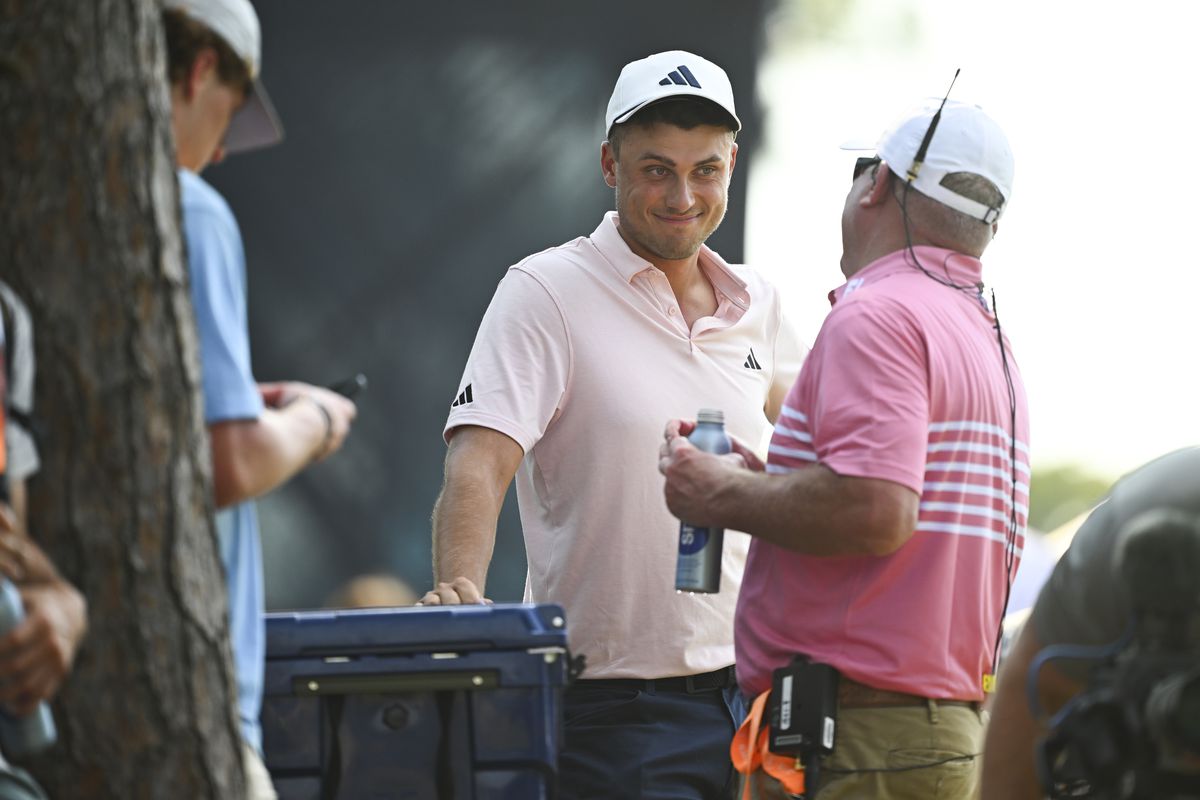Pinehurst No. 2 has once again proven itself worthy of a terrific U.S. Open venue. It has tested the best players in the world, punishing poor shots while rewarding good ones.
Hence, only eight players sit in red figures after 54 holes, with Bryson DeChambeau leading the pace at 7-under. He holds a three-shot lead over Rory McIlroy, Matthieu Pavon, and Patrick Cantlay as he eyes his second major. DeChambeau won the U.S. Open at Winged Foot in September 2020 during the pandemic.
So after another fun day at Pinehurst, here are the winners and losers from North Carolina:
Winners:
Bryson DeChambeau’s Game
Bryson DeChambeau entertained the golf world all day on Saturday. His clutch putts, his 350-yard drives, his spectacular shot from the sand on the 13th hole, and his tremendous approach on the 14th hole all added up to a 3-under 67.
Diabolical approach.
Brandel made a great point about the angles here too. Bryson had nothing, and yet went right at it. A confident, aggressive mindset is a dangerous one and it’s paying off!
He went on to make that putt to get to -8, three shots clear.pic.twitter.com/0bAr5f2J5o
— Jack Milko (@jack_milko) June 15, 2024
He looks like one of the best golfers in the world, relying on his power and short-game finesse to take a commanding lead going into Sunday. He did stumble on the 16th hole, where he made a double bogey, but that did not phase DeChambeau at all. He bounced back with a birdie on the 17th hole, thanks to an ultra-aggressive line he took off the tee.
But every hole DeChambeau plays is must-watch television, whether he birdies or bogies. He is the most entertaining golfer on the planet, which explains why his popularity has skyrocketed.
Ultimately, if he shoots another round in the 60s on Sunday, the U.S. Open is his.
DeChambeau’s Balls
Bryson DeChambeau apparently puts his golf balls in Epsom salt before every round. A reporter asked him about it after his round, and DeChambeau’s response about his balls is priceless:
“Thanks for the salty balls question. I appreciate that. Yeah, I put my golf balls in Epsom salt. I’m lucky enough that Connor, my manager, does that now. I don’t have to do it. But essentially, we float golf balls in a solution to make sure that the golf ball is not out of balance,” DeChambeau explained.
“There was a big thing back in the day where golf balls are out of balance, and it’s just because of the manufacturing process. There’s always going to be an error, especially when it’s a sphere, and there are dimples on the edges. You can’t perfectly get it in the center. So what I’m doing is finding pretty much the out-of-balanceness of it, how much out of balance it is. Heavy slide floats to the bottom, and then we mark the top with a dot to make sure it’s always rolling over itself.”
To quote CBS Sports reporter Kyle Porter’s mantra, “Normal Sport.”
Can Rory McIlroy do it?
Rory McIlroy’s 10-year major drought has been well documented. But what amazes me about McIlroy, at least this time, is that he is back in the mix for a sixth straight U.S. Open. Despite the outside fray with LIV Golf, his dreams of a world tour, and most importantly, the uneasiness of his family life surrounding a potential divorce, McIlroy still has a chance to win a second U.S. Open title.
He shot a 1-under 69 on Saturday despite making two late bogies that stalled his momentum. And yet, anything can happen on this golf course, and McIlroy knows that. He also has plenty of confidence going into round four. Plus, he is hitting his driver better than anyone, so if he can clean up his irons a tad, he should have a shot at the end.
All of this gives McIlroy—and golf fans everywhere—hope, and hope is an amazing drug.
Losers:
Tony Finau and Ludvig Åberg
The 13th hole all but ended their chances, as Tony Finau and Ludvig Åberg made triple bogies on this short par-4.
Each golfer played a game of ‘ping-pong,’ chipping back and forth across the green, which took them out of contention. Even if each player walked away with a bogey, they would still have an outside shot at winning their first major title on Sunday. But a triple bogey is too damaging of a score to overcome. Finau now sits six shots back of Dechambeau while Åberg, the 36-hole leader, is now five.
Because of this, Johnson Wagner of the Golf Channel analyzed this hole on ‘Live From the U.S. Open’ after the round:
Scottie Scheffler
Scottie Scheffler played much better on Saturday.
But his third round was a day filled with ‘What-ifs?’ Those question marks mainly stemmed from his putter, as Scheffler could not get a putt to drop all day. He gave himself plenty of chances to climb the leaderboard, but his flat stick kept him at bay. As such, the World No. 1 settled for a 1-over 71, but he could have easily shot a score in the mid-60s.
:no_upscale()/cdn.vox-cdn.com/uploads/chorus_asset/file/25493156/2157707896.jpg)
Pace of Play
My god. The final two groups played at a snail’s pace, with Patrick Cantlay and Bryson DeChambeau as the main culprits. Cantlay is notoriously slow and has been for quite some time. Just ask Brooks Koepka.
Similarly, DeChambeau, who needed to get stretched out on the 11th hole, loves to take his time. Given his scientific and mathematical approach to the game, DeChambeau has to dissect every single shot he plays, even putts from inside of 18 inches.
As such, the United States Golf Association (USGA) should have levied a penalty. They supposedly provided a warning to DeChambeau and Åberg, who, for what it’s worth, flies around a golf course, but a steeper penalty should have been assessed. Pace of play is a problem, especially considering that DeChambeau’s group—the final pairing—finished nearly 45 minutes after McIlroy’s, who played in the third to last group.
Jack Milko is a golf staff writer for SB Nation’s Playing Through. Be sure to check out @_PlayingThrough for more golf coverage. You can follow him on Twitter @jack_milko as well.

